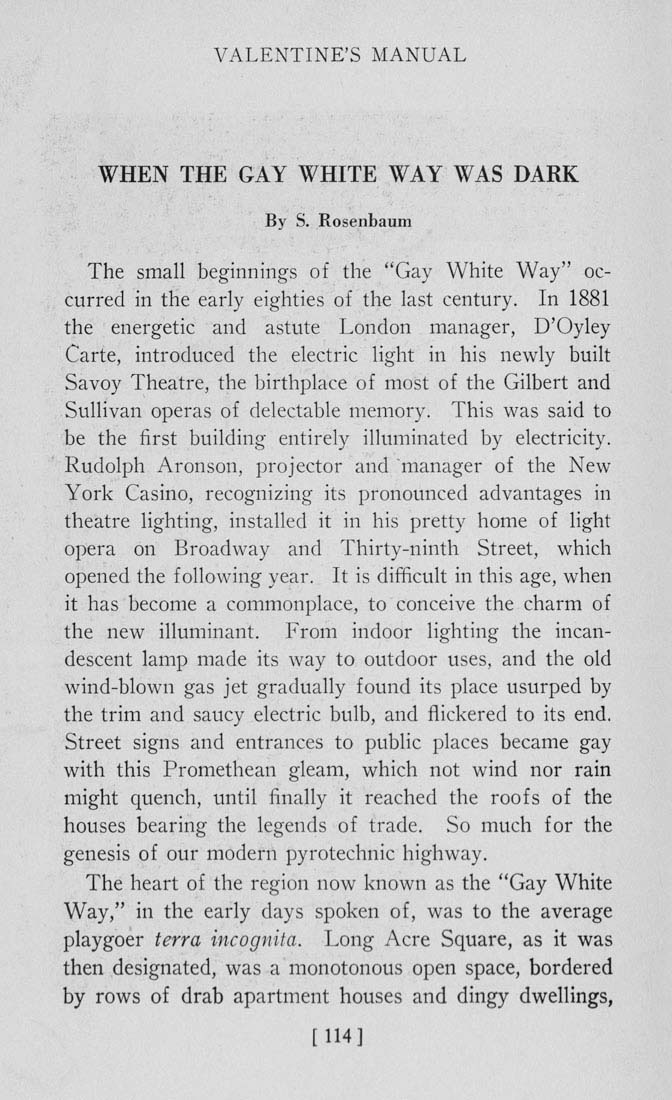VALENTINE'S MANUAL
WHEN THE GAY WHITE WAY WAS DARK
By S. Rosenbaum
The small beginnings of the ''Gay White Way" oc¬
curred in the early eighties of the last century. In 1881
the energetic and astute London manager, D'Oyley
Carte, introduced the electric light in his newly built
Savoy Theatre, the birthplace of most of the Gilbert and
Sullivan operas of delectable memory. This was said to
be the first building entirely illuminated by electricity.
Rudolph Aronson, projector and manager of the New
York Casino, recognizing its pronounced advantages in
theatre lighting, installed it in his pretty home of light
opera on Broadway and Thirty-ninth Street, which
opened the following year. It is difficult in this age, when
it has become a commonplace, to conceive the charm of
the new illuminant. From indoor lighting the incan¬
descent lamp made its way to outdoor uses, and the old
wind-blown gas jet gradually found its place usurped by
the trim and saucy electric bulb, and flickered to its end.
Street signs and entrances to public places became gay
with this Promethean gleam, which not wind nor rain
might quench, until finally it reached the roofs of the
houses bearing the legends of trade. So much for the
genesis of our modern pyrotechnic highway.
The heart of the region now known as the ''Gay White
Way," in the early days spoken of, was to the average
playgoer terra incognita. Long Acre Square, as it was
then designated, was a monotonous open space, bordered
by rows of drab apartment houses and dingy dwellings,
[114]
|








